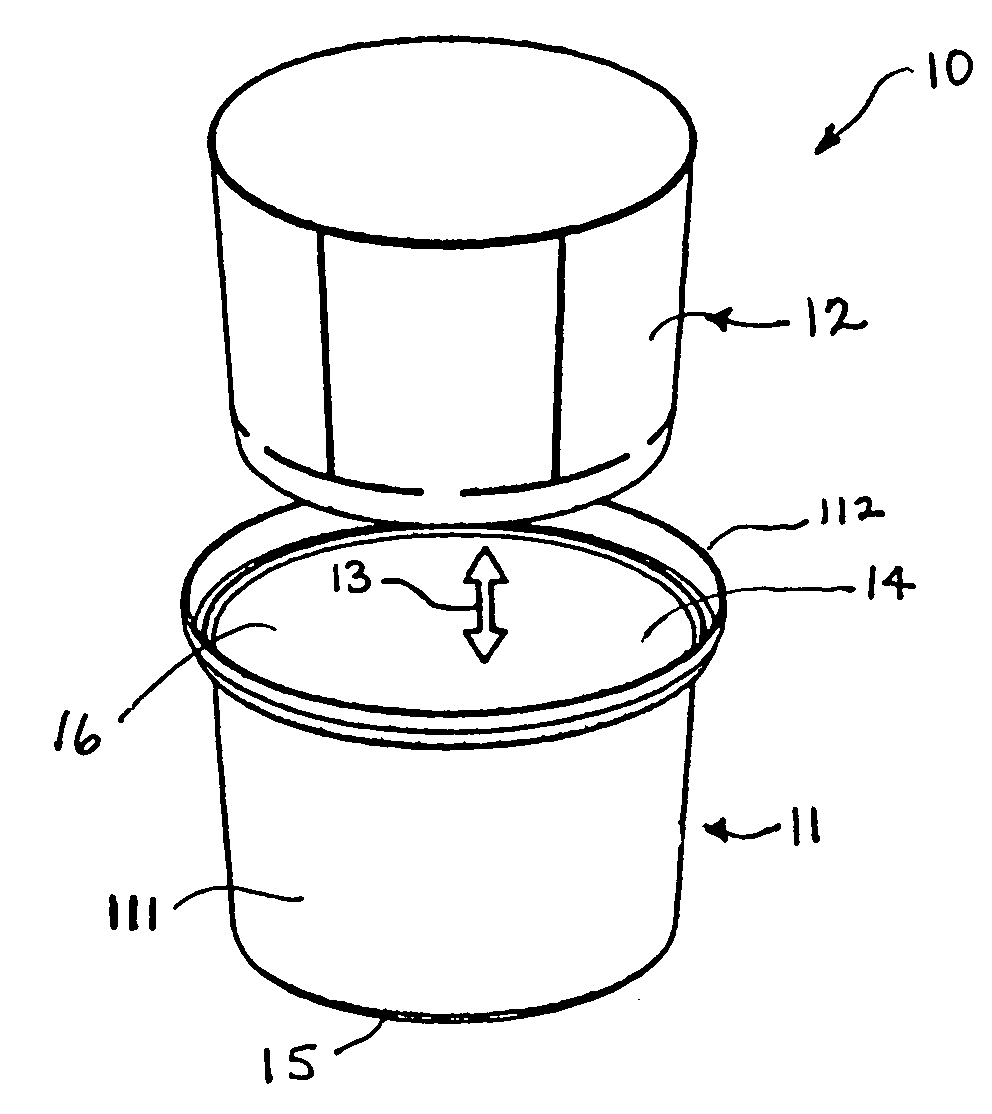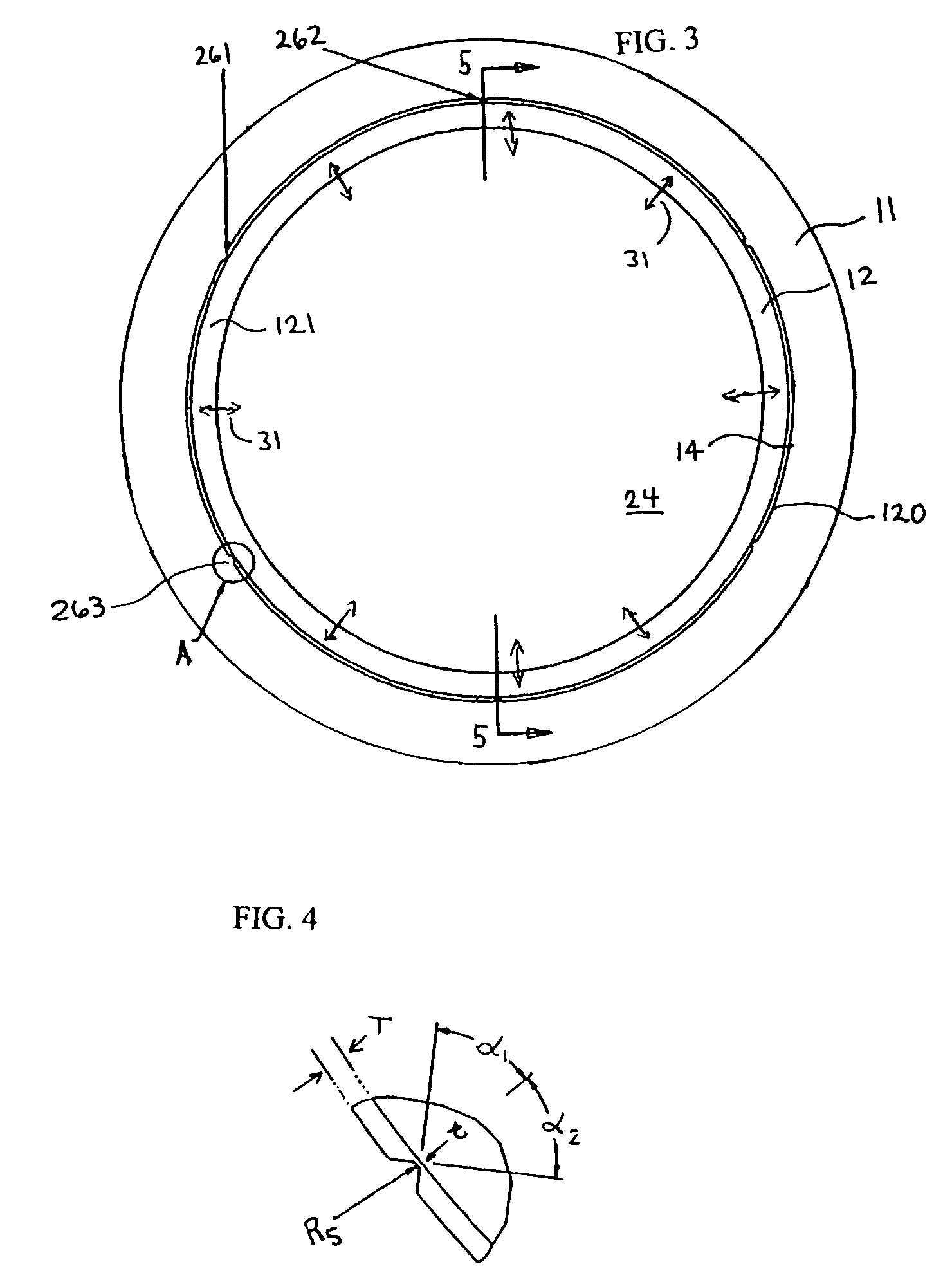Food container
a food container and container body technology, applied in the field of food containers, can solve the problems of product users may need to use a utensils, food products often tend to stick to and/or become “gripped”, and achieve the effects of reducing wall adhesion effects, reducing the density of food products, and balancing rigidity, flexibility and heat toleran
- Summary
- Abstract
- Description
- Claims
- Application Information
AI Technical Summary
Benefits of technology
Problems solved by technology
Method used
Image
Examples
Embodiment Construction
[0027]In preferred embodiments, the present invention provides easy and effective food product release from metal containers. It is particularly useful for assisting product release of hot-filled and cooled food products from metal can type packaging.
[0028]Referring to FIG. 1, a food container 10 having an open can part 11 and an insert 12 is shown in accordance with an embodiment herein. In this illustration, a can closure is not shown, but it will be understood that such a part typically will be attached to open end of the filled can part 11 as part of the food packaging operation.
[0029]The insert 12 is configured with a geometry and a material construction which provides flexural properties which reduce or even eliminate food “gripping” problems associated with vacuum effect arising from food product hot-filling and cooling. The insert 12 also is constructed of a polymeric material which is less susceptible than metal materials to sticking to hot-filled food materials, which furt...
PUM
| Property | Measurement | Unit |
|---|---|---|
| thicknesses | aaaaa | aaaaa |
| formable thickness | aaaaa | aaaaa |
| temperature | aaaaa | aaaaa |
Abstract
Description
Claims
Application Information
 Login to View More
Login to View More - R&D
- Intellectual Property
- Life Sciences
- Materials
- Tech Scout
- Unparalleled Data Quality
- Higher Quality Content
- 60% Fewer Hallucinations
Browse by: Latest US Patents, China's latest patents, Technical Efficacy Thesaurus, Application Domain, Technology Topic, Popular Technical Reports.
© 2025 PatSnap. All rights reserved.Legal|Privacy policy|Modern Slavery Act Transparency Statement|Sitemap|About US| Contact US: help@patsnap.com



